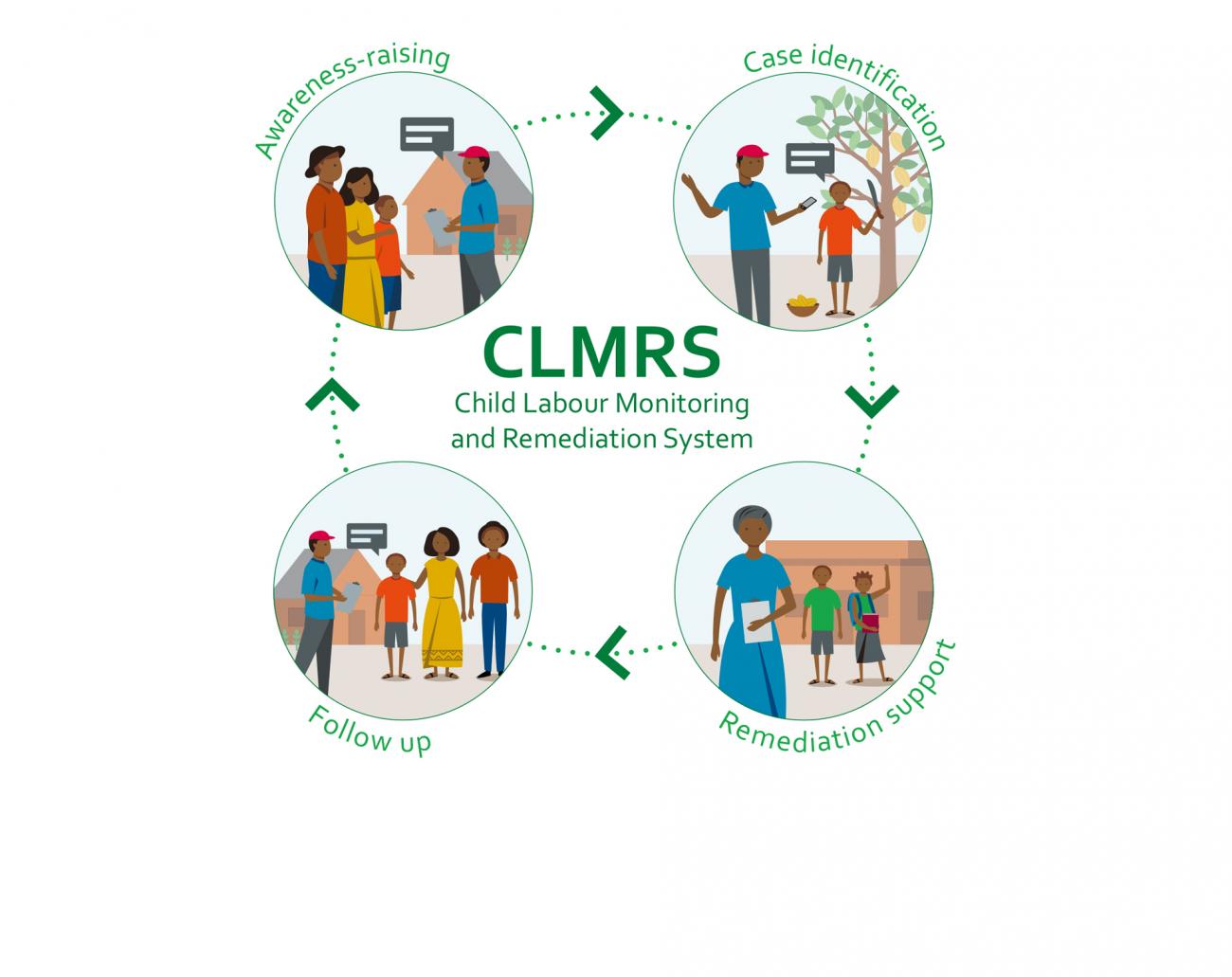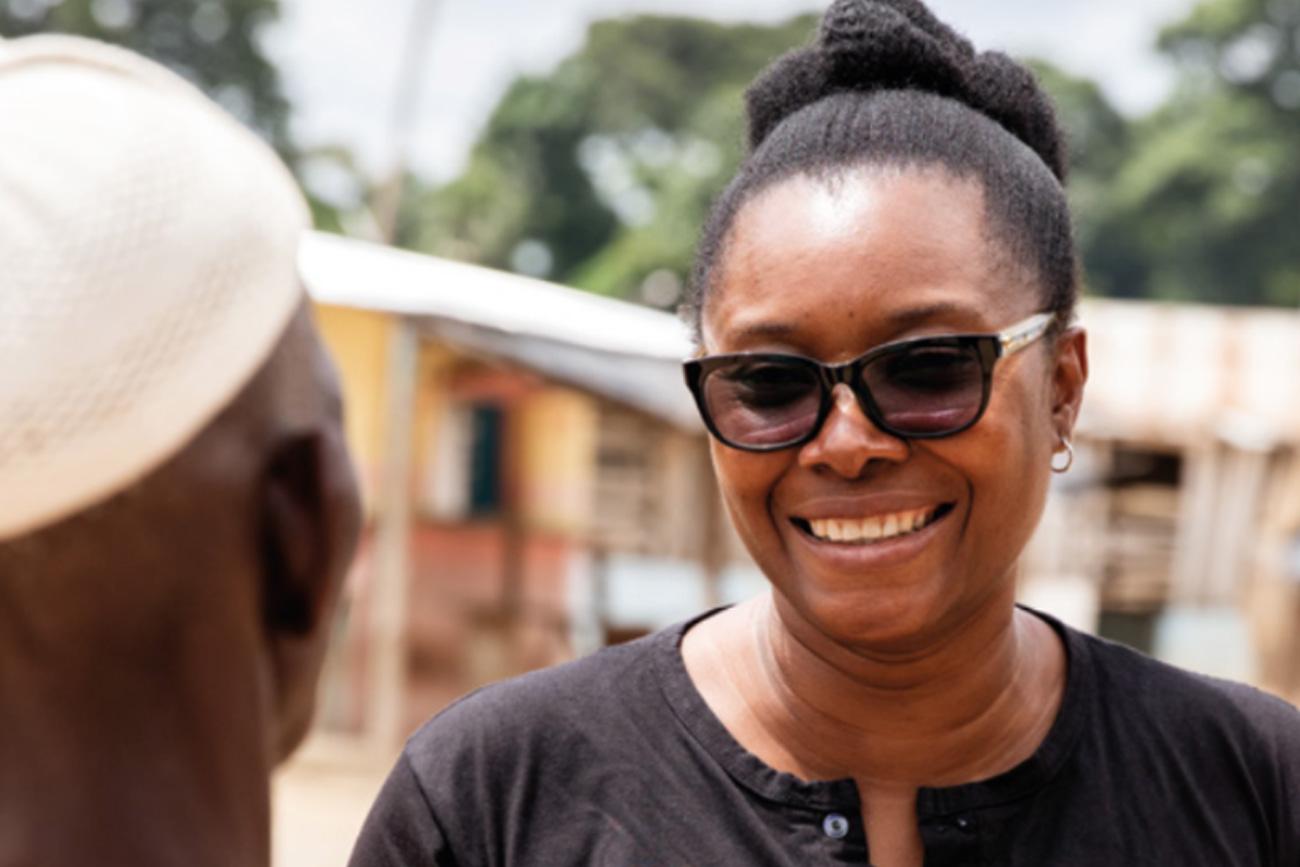Child Labour Monitoring and Remediation Systems (CLMRS) are a means of targeting prevention, mitigation and remediation assistance to children involved in or at risk of child labour, as well as to their families and communities.
The development of systems to monitor child labour has been underway since the 1990s, largely driven by the ILO’s International Programme on the Elimination of Child Labour (IPEC). With the goal of identifying and removing children from child labour, these systems are based around the key elements of “regularly repeated direct observations to identify child labourers and to determine risks to which they are exposed, referral of these children to services, verification that they have been removed and tracking them afterwards to ensure that their situation has improved.”9
Systems to monitor and remediate child labour have been put in place in multiple countries, in partnership with a range of actors at the local and national level, and in many different supply chains, including cocoa.
The 2011 UN Guiding Principles for Business and Human Rights sets out the responsibility of businesses to put in place “a human rights due diligence process to identify, prevent, mitigate and account for how they address their impacts on human rights” and to “enable the remediation of any adverse human rights impacts they cause or to which they contribute”.10 These same messages emerge from the OECD Guidelines for Multinational Enterprises, which emphasise the responsibility of businesses to carry out human rights due diligence, explaining that “addressing actual and potential adverse human rights impacts consists of taking adequate measures for their identification, prevention, where possible, and mitigation of potential human rights impacts, remediation of actual impacts, and accounting for how the adverse human rights impacts are addressed.”11
In response to this guidance, increasing numbers of businesses have recognised child labour as a salient human rights risk and adopted Child Labour Monitoring and Remediation Systems as a way of conducting their due diligence in response to this risk.
This trend is being accelerated by a raft of legislation that has been adopted or is currently being drafted in various countries which will make human rights due diligence mandatory for businesses operating global supply chains.12 Such legislation is expected to increasingly oblige businesses to assess human rights risks across their supply chains, to take action to prevent, mitigate and address these risks, to ensure that victims of human rights abuses receive remediation and to report on their efforts and outcomes.
Increasing numbers of businesses in the cocoa sector have recognised child labour as a salient human rights risk, and adopted Child Labour Monitoring and Remediation Systems as a way of conducting their due diligence in response to this risk.

For this review, we adopt an operational definition of a Child Labour Monitoring and Remediation System which, in line with the language of the UN Guiding Principles, includes explicit mention of both monitoring and remedy, and is based on the CLMRS Benchmarking study.13 This definition requires that a CLMRS be able to implement the following core activities:
- Raise awareness about child labour and the resulting harm amongst farmers, children and the wider community.
- Identify children in child labour through active, regular and repeated monitoring, using standardised data collection tools.
- Provide support (prevention and remediation) to children in child labour or at risk of child labour, their families and communities, as well as document the support provided.
- Follow-up with children identified in child labour and continue to monitor their status on a regular basis until they have stopped engaging in child labour and have satisfactory alternatives.14
All of the core activities under a CLMRS should be implemented wherever possible in partnership with structures already in place to address child labour, notably governmental structures, and should seek to strengthen capacities of local stakeholders, as well as of existing child protection systems. The outcomes of these activities should be verified by independent third parties.
In the smallholder agricultural sector, and in the cocoa sector in particular, Child Labour Monitoring and Remediation Systems (CLMRS) have gained increasing prominence, due in part to their promising results,15 but also to the fact that their establishment was made mandatory in the 2016 UTZ code of conduct and in the 2015 CocoaAction strategy from the World Cocoa Foundation (WCF). In 2020, the Rainforest Alliance published its Sustainable Agriculture Standard, which included the need to “assess and address” child labour, as well as other human rights risks, as a core element.16 In Ghana and Côte d’Ivoire, Child Labour Monitoring and Remediation Systems are an explicit requirement for certified farmer groups.17
By 2020, Child Labour Monitoring and Remediation Systems were estimated to cover around 25% of all cocoa-growing households in Côte d’Ivoire and Ghana.18 Multiple stakeholders, including governments, certifiers, companies and membership organisations are increasingly implementing, supporting or requiring CLMRS, and several stakeholders have made recent commitments to scale up CLMRS significantly across the cocoa supply chain.19
Objectives and scope of this review
In this study, we examine several Child Labour Monitoring and Remediation Systems being implemented in the cocoa sector in West Africa. Building on the 2017 Effectiveness Review of Child Labour Monitoring Systems in the Smallholder Agricultural Sector of Sub-Saharan Africa,20 also conducted as a collective multi-stakeholder exercise led by ICI, this second phase has been able to go into much greater detail, drawing from data now available from CLMRS that are being implemented by a growing number of stakeholders, including government, private sector and civil society actors. For this review, we have analysed information provided by 9 stakeholders who have implemented CLMRS, and granular data from 12 CLMRS projects, in order to understand how differences in the design, set-up, operation and management of such systems affect the way they function. We use these data insights not to recommend a single approach or to propose a ‘gold standard’ for CLMRS, but rather to highlight various modalities that have been chosen by stakeholders and to compare, where possible, their effectiveness in light of different criteria.
By 2020, Child Labour Monitoring and Remediation Systems were estimated to cover around 25% of all cocoa- growing households in Côte d’Ivoire and Ghana.

The overall aim of the study is to identify ways of improving the efficiency and cost-effectiveness of Child Labour Monitoring and Remediation Systems, to inform ongoing efforts to scale them up.
This research was guided by a Technical Working Group, consisting of CLMRS stakeholders from the cocoa and chocolate industry and international non-profit organisations, who worked collectively to determine the research questions, refine effectiveness criteria, contribute data from their systems for the analysis and participate in the review of the findings and recommendations. The catalogue of research questions, the data analysis plan and the analytical results have also been reviewed by an external academic expert.
How do the institutional set-up and design of a CLMRS affect its ability to identify children in child labour?
Which modalities of a CLMRS work best to protect children from hazardous work and promote their education?

